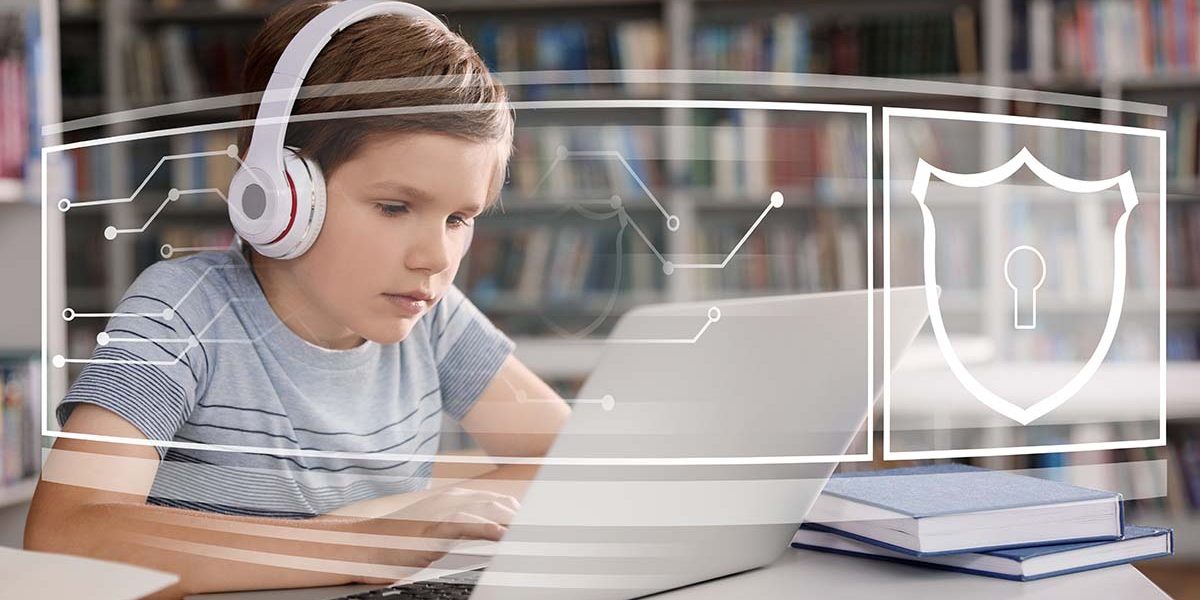Ever since the dot-com bubble in the late 1990s, people across the globe have gained access to seemingly endless amounts of information. Cell phones, apps, and other convenient technologies exploded in popularity, increasing the risk of underage students accessing harmful material. As a result, Congress passed the Children’s Internet Protection Act in 2000 to block students from detrimental content at school.
Under the Children’s Internet Protection Act, schools and libraries may not receive discounts for internet access through the E-rate program if they do not have internet safety policies and proper technology. The goal is to encourage safe online habits and block access to inappropriate digital material. States have also passed similar laws requiring internet filters for schools.
School district leaders may believe they’re in compliance with federal law, but a lot of filters are out of date. Specifically, many filters only ban a list of website URLs. As a result, students and staff have figured out how to bypass the restrictions, leading to many potential problems. Fortunately, new artificial intelligence is available to filter website content and restrict inappropriate material. With AI, school districts can ensure that the content students access while in the classroom is safe, appropriate, and in compliance with federal and state laws.
What to Know About Complying With the School Internet Filtering Law
Today, most students are back in brick-and-mortar classrooms at least part time, and many utilize school-issued devices. Now that the educational experience requires internet access, school districts need more than a simple school web filter.
Under the school internet filtering law, schools and libraries must use internet filters to block materials that are obscene, have child pornography, or are harmful to minors if they want E-rate funding. This is one of many federal incentives designed to keep children safe in their learning environments. However, current filtering mechanisms risk blocking helpful content while allowing inappropriate material to slip through. Ineffective filters can hamper students’ learning experiences while exposing them to content that may not be appropriate for their age group.
Over time, the purpose of the act has become even more important, but schools are falling behind. Luckily, artificial intelligence can be used to better protect students from unsafe material while also improving access to educational content.
How to Approach Internet Filters for Schools
Today’s internet has surpassed the ability of many school systems’ filtering technologies. For example, URL list blocking cannot effectively filter social media content, and keyword blocking doesn’t recognize contextual nuance, inventive spelling, or ambiguity. The internet continues to evolve, which means school districts must consider dynamic tech solutions. Here’s how school districts can navigate new issues and meet security expectations using AI:
- Use AI to eliminate learning distractions.
Digital distractions are the biggest challenge facing schools, with over 250,000 new websites and 720,000 hours of new YouTube content going live each day. When students are disrupted during an activity that requires cognition, it takes several minutes on average for them to regain the same level of engagement. AI technology has more advanced settings to help students self-regulate their time online and stay on task. In fact, schools that use AI can reduce digital distractions by 40% in the first four weeks of use, according to 2022 Deledao aggregate usage data.
“We know that the problem of student self-regulation as it relates to academic success is exacerbated by digital learning environments,” says Kevin Kuckkan, M.Ed. and vice president of Deledao, which holds a contract under the oversight of the AEPA purchasing cooperative program. “And with many students demonstrating an inability to self-regulate during digital learning, schools that expect students to detach from digital distractions of their own volition during instructional time may very well be asking many of their students to do something they’re simply incapable of doing.”
- Effectively block inappropriate pages.
Before schools began using AI to filter content, a lot of older technologies caused students to experience delays. Real-time AI sees each page the moment a student attempts to gain access to it. As a result, there is no wait time for legacy filters to crawl the page, flag it as inappropriate, and add it to the blocked list.
- Distinguish search terms and curb inventive spelling.
Real-time AI applications also enable school computer systems to make better distinctions between search terms and inventive spelling. When students try to spell words differently to bypass filters, AI recognizes it and can alert teachers if there is a serious issue. For instance, AI can determine the difference between a student searching “4t nyte” versus “Fort Sumter” or the difference between “how to weed my garden” and “how to grow weed in my garden.”
While many educators have shared frustrations regarding internet filters over the years, complying with the Children’s Internet Protection Act is much easier with the right technology. All school systems need to do is invest in AI technology that can effectively filter harmful content. Once school districts rely on AI for additional support, they can eliminate online learning distractions and improve the educational experience for years to come.








